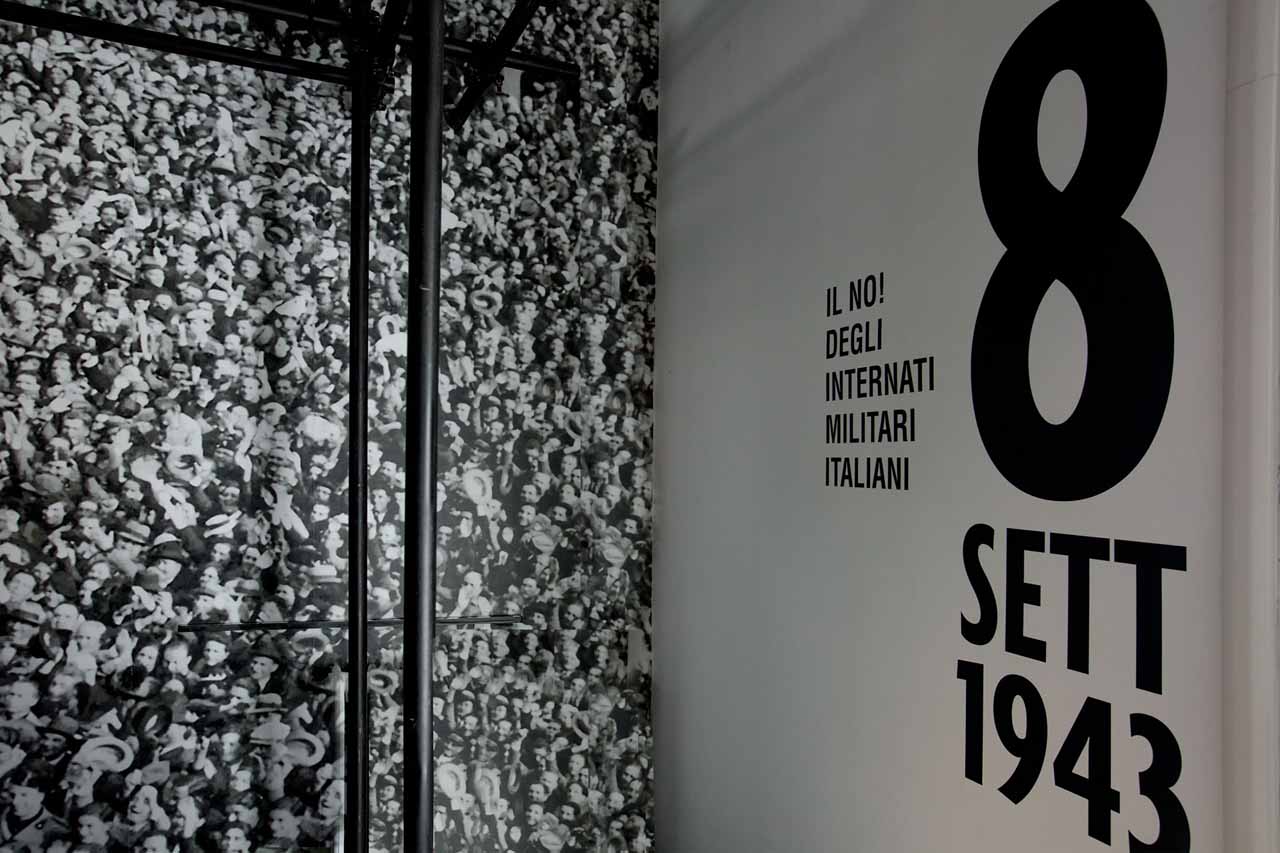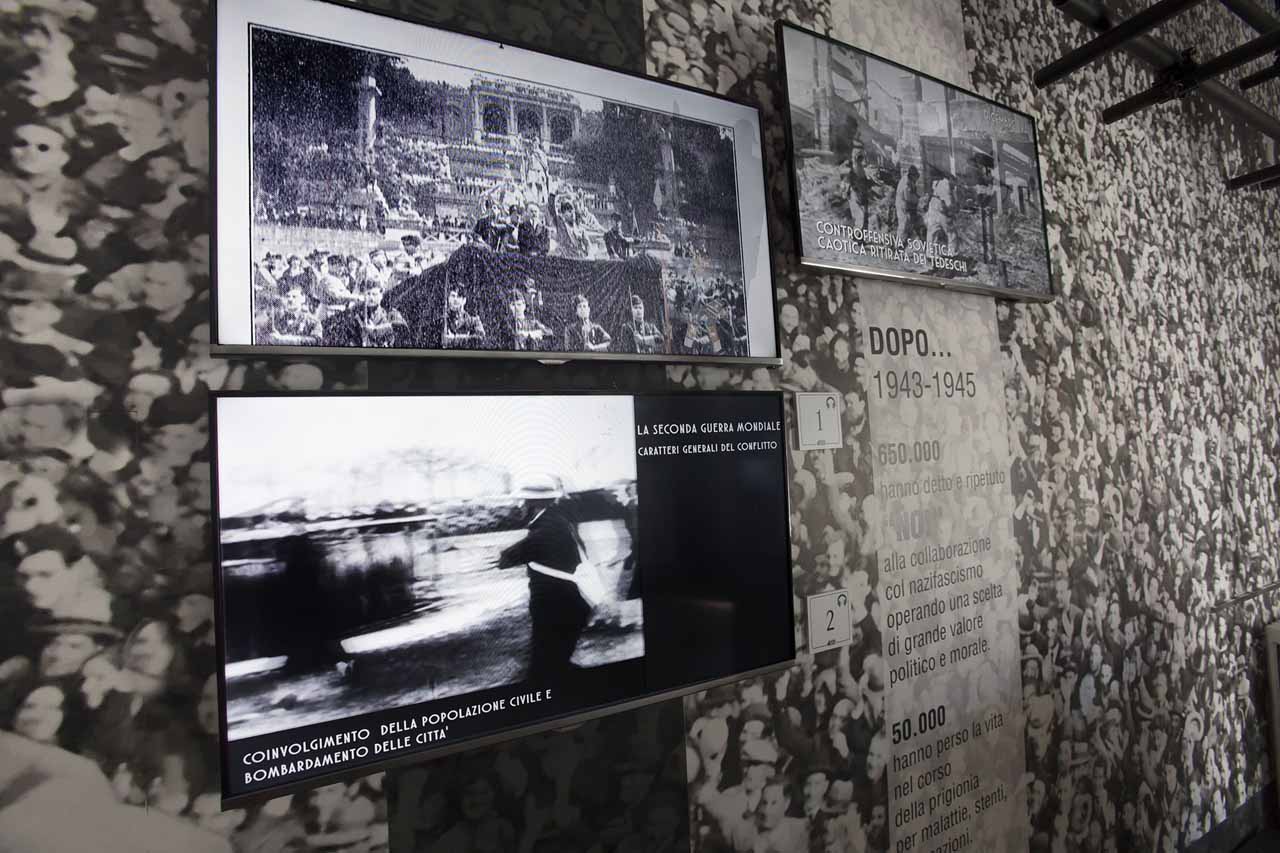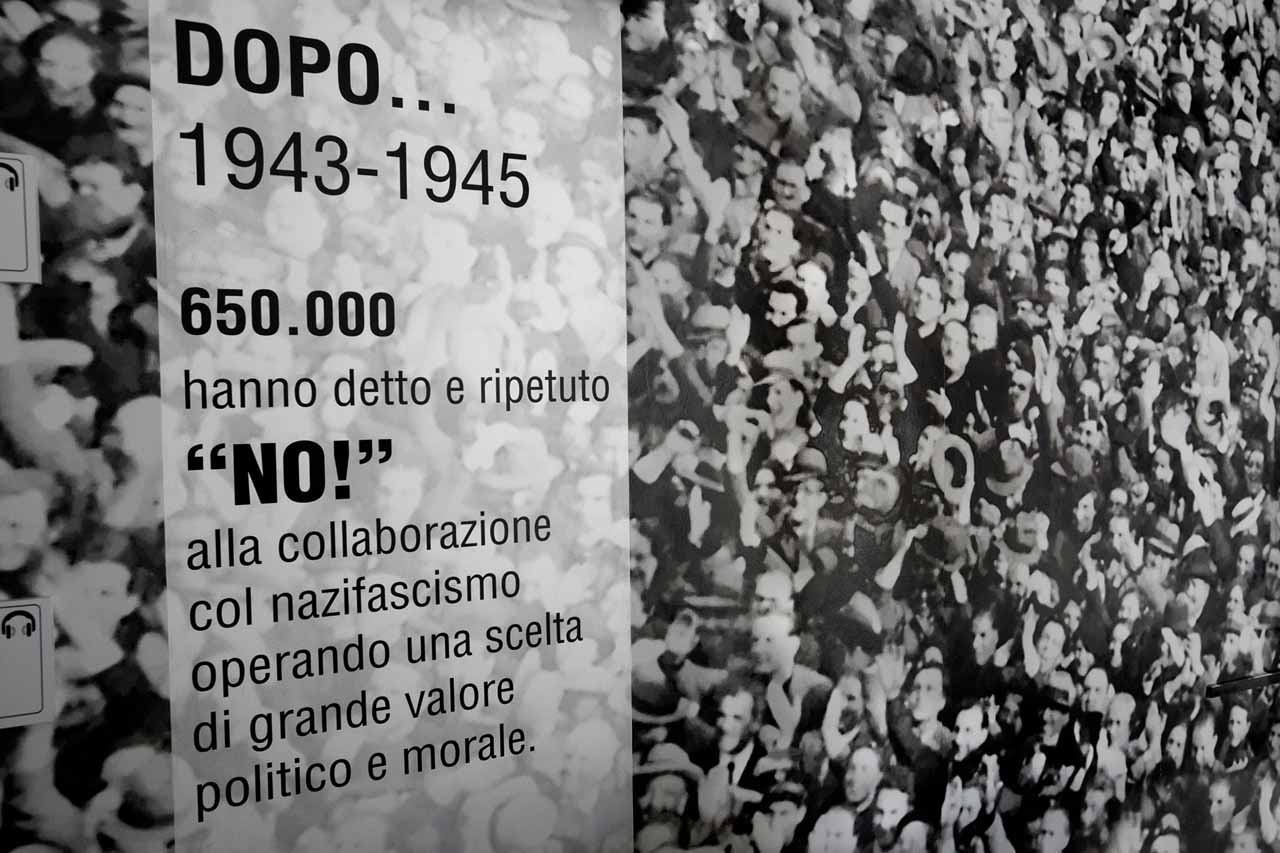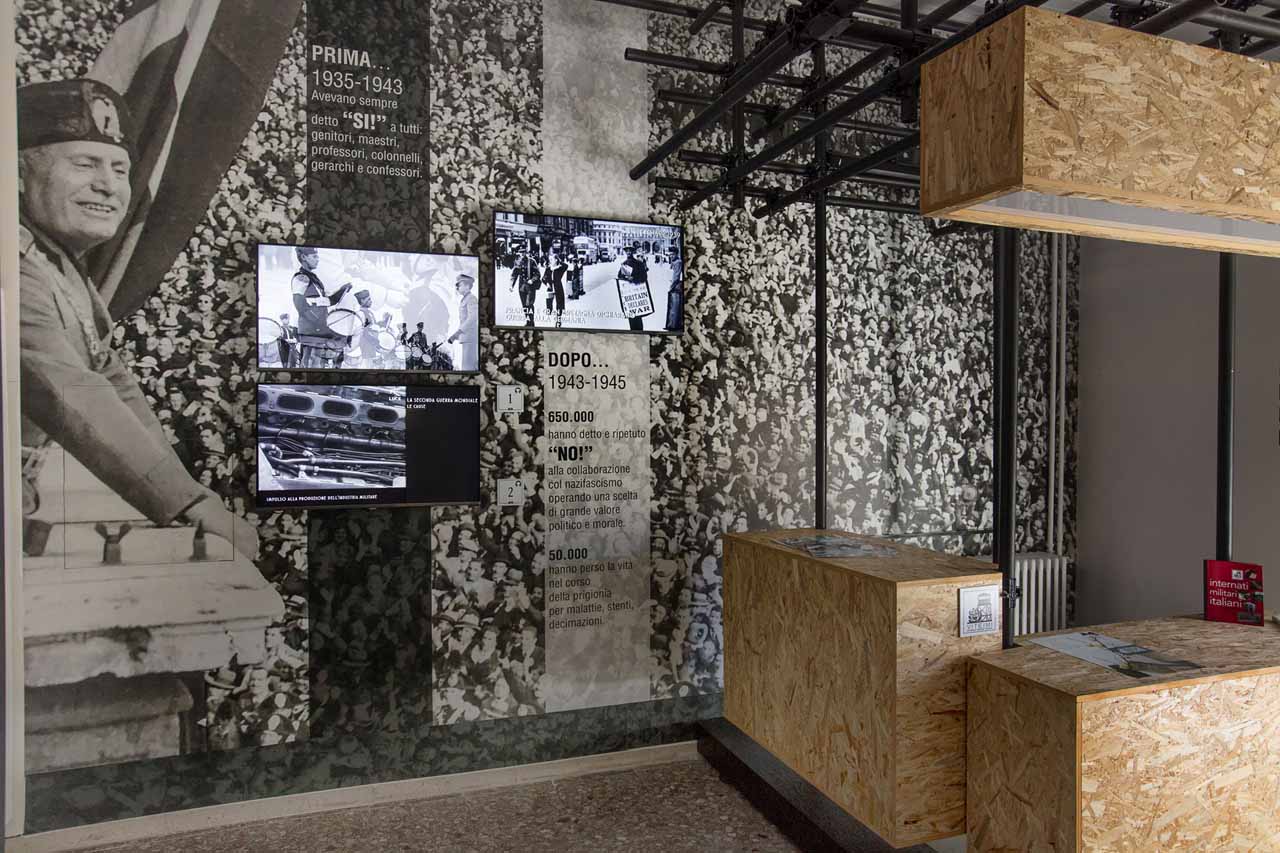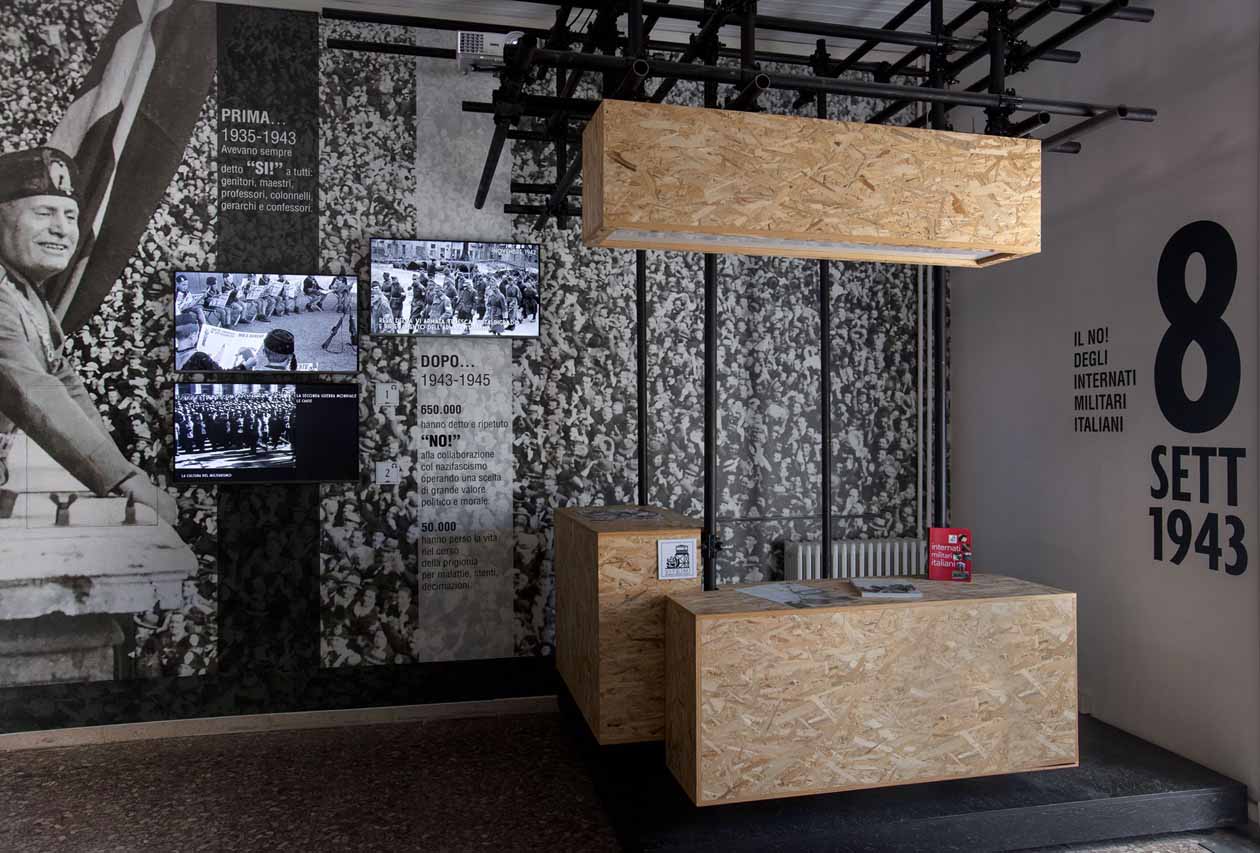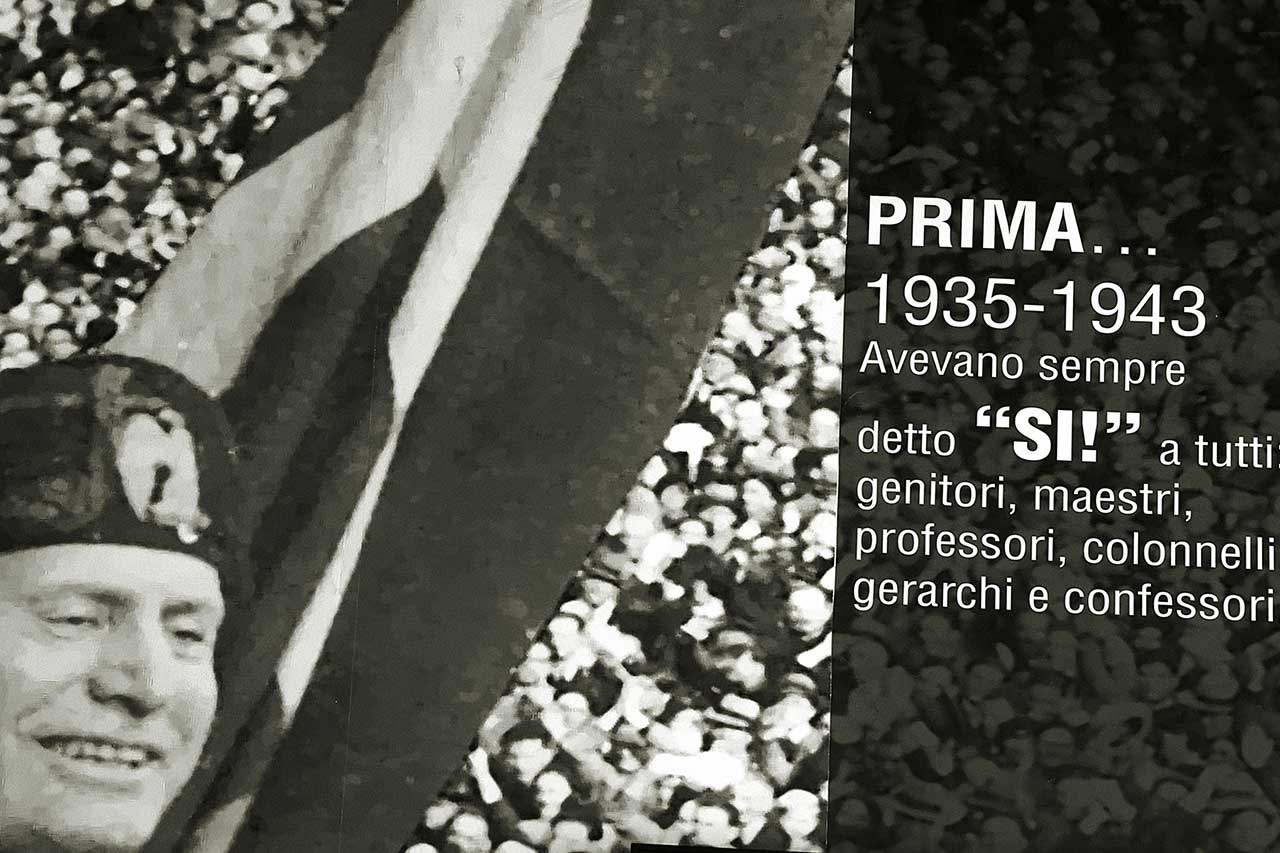september 8th
The announcement of the Armistice between the Badoglio government and the Allies leaves Italian soldiers, who have been fighting alongside the Germans since Italy’s entry in World War II on 10 June 1940, without orders. They are located on multiple war fronts, from southern France to Greece, from Russia to the Balkans, but also in Italy, where the situation is particularly critical due to the considerably increase in the presence of Reich soldiers following the fall of the fascist regime on 25 July and Mussolini’s arrest. Everywhere the soldiers of the Royal Army find themselves in disarray. Over one million are disarmed by the Germans, the ascertained prisoners are over 800,000.
“To believe, to obey and to fight” was the motto of those, from their early childhood, and onwards into their enrolment into the Balilla ( a fascist paramilitary youth movement) and the Young Fascists. This is seen in sharp contrast to the later, “NO!” to the collaboration with the Nazi-fascism that was repeated several times during the period of camp internment. That “NO!” was a real resistance. A resistance without weapons, the first step towards regained freedom of thought.
Three introductory videos retrace the years before the Second World War, the significant moments on the various war fronts, with particular focus on the days of the Armistice and on the protagonists who contributed towards those events.
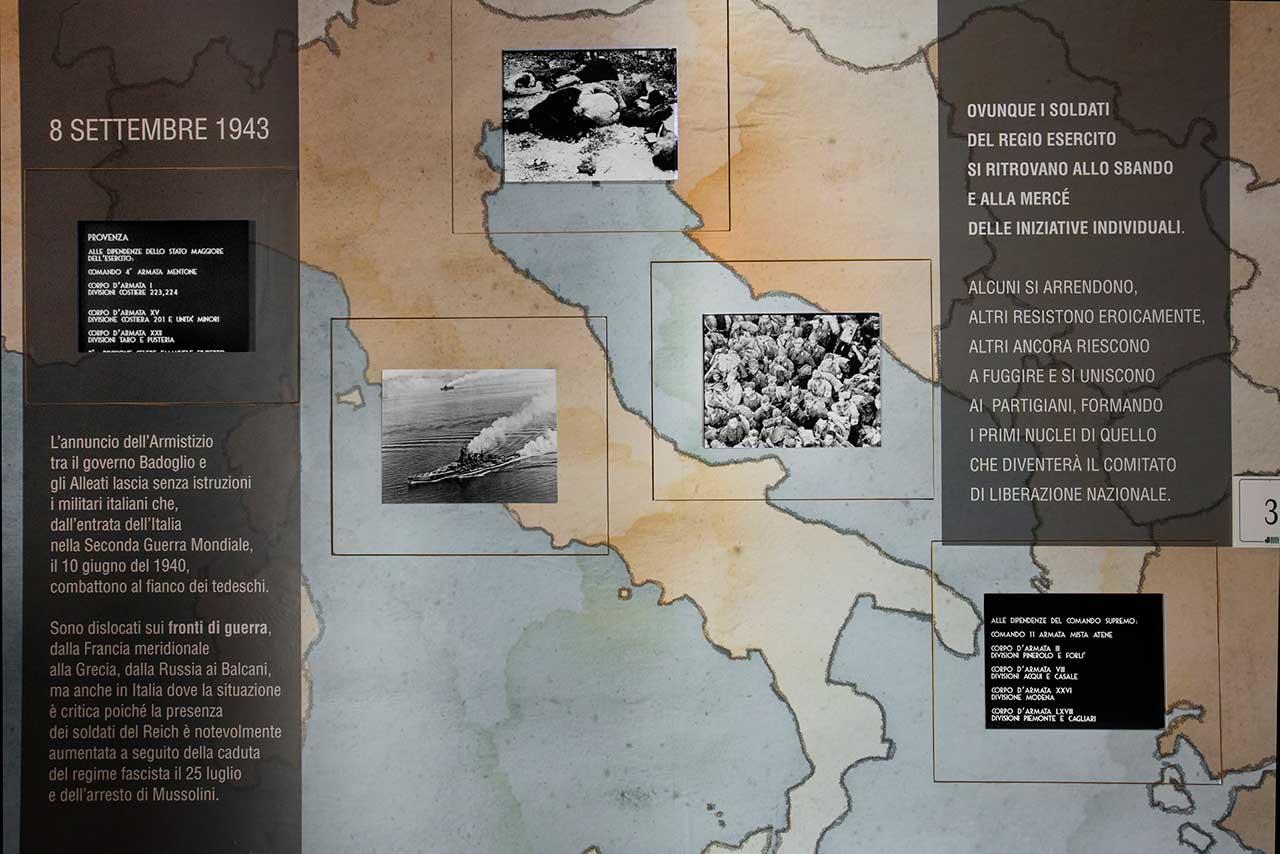
This information panel shows the areas around the Mediterranean in which Italian soldiers were sent to fight during World War II. On the large map digital frames reproduce photographs taken on different fronts: on the Greek-Aegean, Yugoslav, Albanian fronts, on national territory and on the French western front.
To further your experience consult the totem touch screen, where you can read biographical notes about some IMIs, view documents, browse pages of diaries and letters, and access the video gallery to listen to several testimonies of the internees.

